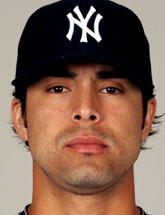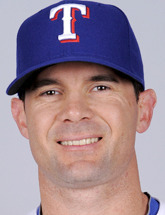PITTMAN’S PITCHING POINTERS
Pitching is more than just throwing.
Learn the hitting flaws.
Then learn how to pitch to the specific flaw.
If you’re at the Little League level, eventually your catcher will learn the flaws, too. Right now he’s learning to receive, block pitches, set defenses, and busy watching the hitter’s feet and bat speed while tracking your pitch.
Pitching coaches and pitchers have their own language and sayings to get the message across:
Sit and Drive…Land at a 45
“Sitting” helps you to not “rush”, but instead, stay balanced in your delivery. As you step toward home plate, stride so that the ball of your lead foot and toe will land at a 45 degree angle. This ensures proper hip rotation after your lead foot lands, and that you’ll be using your legs as well as your arm in your pitching mechanics.
Push, pop...over the top...leaves you with pep in your step
The push is the balanced push off of the pitching plate (pitcher’s rubber). Pop is a term for the hip rotation after landing the front foot at a 45 degree angle during the delivery.
“Over the top” is the action of the trailing foot in a complete follow through (this happens naturally after your pitching arm elbow passes by the opposite knee following your delivery). Hence, after your elbow passes your knee in your follow through, your throwing side foot will rise above your throwing side hip without any extra effort on your part. This is what pitching coaches actually mean when they say “bend your back” in regards to a follow through.
Leaves you with pep in your step
This just means that you’ll have more endurance/stamina because you’re using your legs and your body to pitch with…instead of just using your arm.
Shoulder to shoulder makes your pitches bolder
For control of your pitches, your front shoulder heads (points) to the location you want your pitch to go. After delivery, your back shoulder will point toward the same target that your front should was targeted at… which greatly improves control accuracy and will occur naturally with the correct follow through. This is what pitching coaches call “full rotation”.
Bolder pitches means that you’ll spot your pitches to areas that hitter’s have trouble hitting solidly (they prefer to hit the ones that are thrown over the middle ten inches of the plate in the strike zone).
Pitching to a dime* makes the hitter bitter
The mitt is not the target for the pitcher. It is better to throw (not aim) to a smaller target. A dime target is small, but if you miss- you’ll miss “small”. [Remember a pitcher targets areas away from the middle ten inches of the plate.] Instead of pitching in the middle of the plate, you’ll focus on the catcher’s knees and shoulders since they are usually outside of the middle ten inches of the plate. Therefore, visualize and concentrate (focus) on a dime located on the catcher’s knees and shoulders as targets before and during the delivery of your pitch. *Also, contrary to some coaches’ thinking, you’re never too young to develop this kind of concentration skill… especially when pitching.
Any coach, on any level worth his salt, routinely has his pitchers practice pitching to a designated catcher. At each league level, from Little League to MLB, pitchers follow a Sequence Pitching Schedule. This is another important process to help pitchers develop arm strength, confidence, and command & control. During sequence pitching sessions, it’s imperative that the pitcher’s pitches are charted by a helper. This promotes a game like atmosphere…to simulate game like pressure.
Also, during the throwing session, the pitchers usually alternate throwing 5 pitches from a full windup and then 5 pitches from the stretch. The number of pitches thrown during a session depends on the number of days until the next scheduled appearance in a game. Once the number of pitches to be thrown during the session is determined, the catcher will call the type of pitch and the location for each pitch. On the Little League level, 1 is a fastball and 2 is a change. In higher levels of competition, more types of pitches are thrown, and the pitches are numbered respectively. Locations are also numbered on the catcher. The right and left knees of the catcher are numbered 1 and 2 & the right and left shoulders of the catcher are numbered 3 and 4. On a side note, since the pitcher is getting valuable feedback from a capable helper after the session, make sure the helper has a clip board with a pencil and paper that have rectangular strike zones with cubes inside the rectangles to note the location and type of pitch thrown during the session. For the benefit of the pitcher’s focus, the helper shouldn’t interact with the pitcher until after the throwing session. The helper will silently circle pitches that miss their spot and mark pitches that are on target during the session. It is recommended that punishment of some type for missing the called location be used to make the session more competitive among the pitchers on the team.
GRIP
With seams, the pitch will sink. Across the seams, the pitch will not sink as much. Some will suggest that gripping a ball across the seams will make it rise. Even the best power pitchers don’t really have the ball rise when their grip is across the seams due to physics.
Choking the pitch will reduce the velocity. Also, choking the pitch is better for younger pitchers because it produces a natural change up. When a pitcher matures, usually when they start shaving, a pitcher can learn breaking pitches and other grips for a change up.
Your ultimate goal as a pitcher is to keep the hitter off balance by changing the speed and location of your pitches. Be stoic & never show your emotions in a game when you are pitching. Do this and you will have an edge over the hitters you face.


